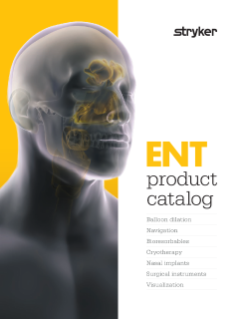ClariFix® cryotherapy device
Over 87 million Americans suffer from chronic rhinitis.1-2 Historically, patients with chronic rhinitis (having symptoms such as frequent runny nose, congestion and or post-nasal drip) have had limited surgical treatment options such as a vidian neurectomy.3
Stryker's ClariFix device goes straight to the root of chronic rhinitis - the overactive nerves. Using a minimally invasive treatment called cryotherapy, the ClariFix device applies focal, controlled freezing to target tissue under direct visualization.4
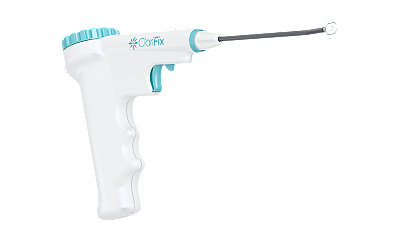
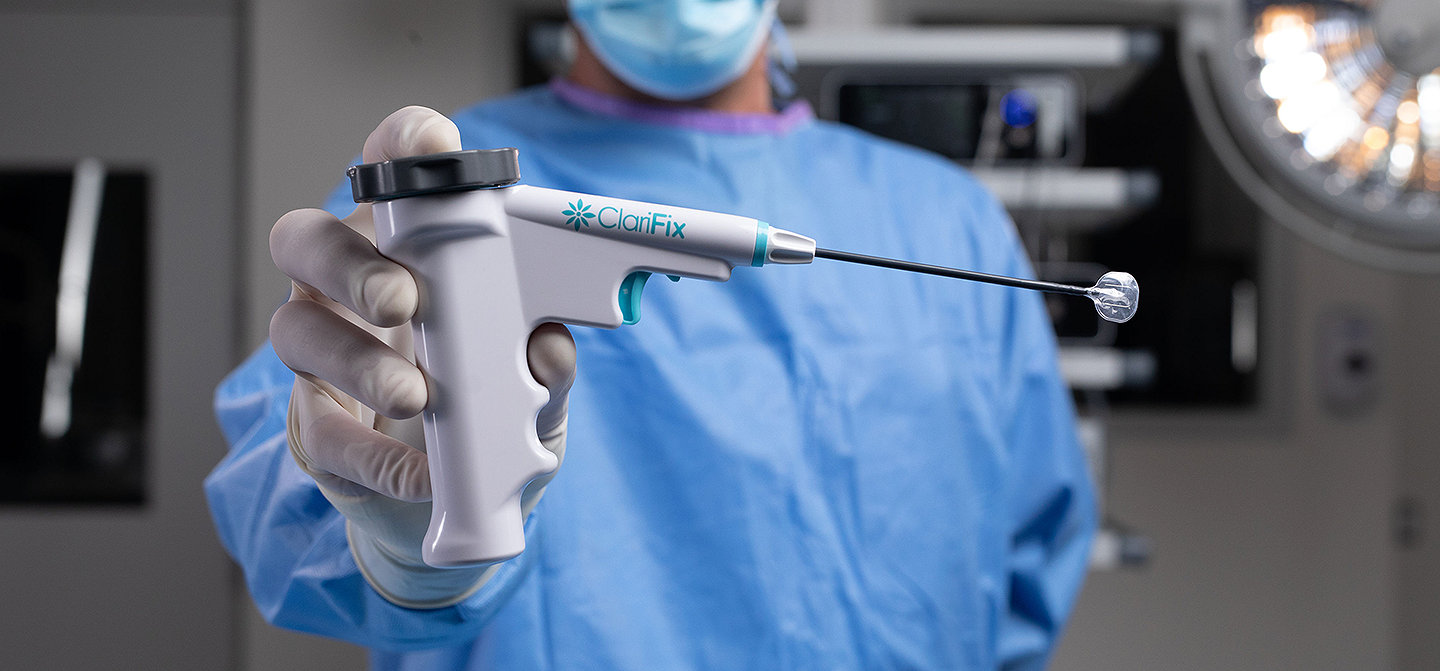
Features and benefits
ClariFix cryotherapy has been shown to be safe and effective1
- Backed by 5 clinical studies1, 5-8
- Minimally invasive
- Side effects may be mild, fleeting, and resolve on their own1, 5-6
- More than 50,000 patients treated since 20179
- Minimal downtime and recovery10
- Can be performed under local anesthesia

ClariFix® works to relieve chronic rhinitis symptoms
Studies have shown ClariFix is a simple, clinically proven device that delivers cryotherapy treatment to treat chronic rhinitis.1, 5-8 It allows you to apply focal, controlled freezing to target tissue under direct visualization.4
ClariFix is the only cryotherapy treatment that ablates the posterior nasal nerves and is supported with two years of clinical data.1
How cryotherapy works
ClariFix cryotherapy works by creating second degree nerve damage at the posterior nasal nerves.11-12 This nerve damage results in the loss of axon continuity distal to the freeze, but preservation of the perineurium, endoneurium, and epineurium.10 Cyrosurgery has demonstrated rapid regeneration of mucosal structures and function. Additionally, large blood vessels have shown to be resistant to the freezing and their function is not impaired.15
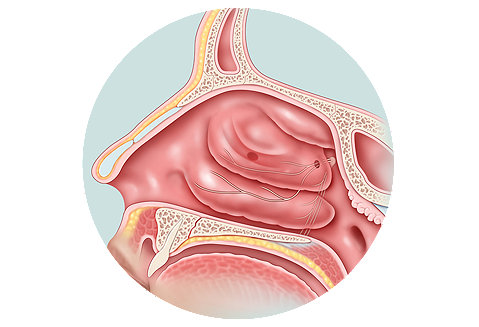
Treatment target is posterior aspect of middle meatus at point of attachment to lateral wall.
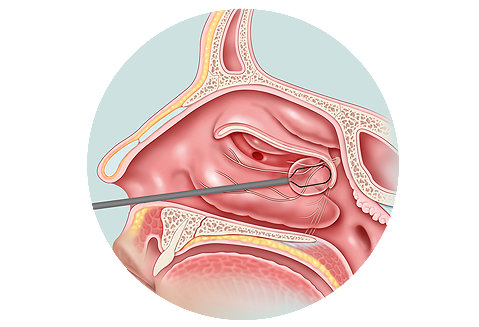
ClariFix device is inserted into nasal cavity under visualization with tip pointed toward lateral wall.
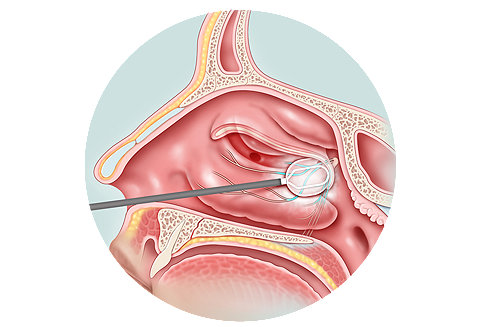
Basal lamella stops cryoprobe from advancing further.
*Most patients begin to see improvement 30 days post treatment.
Product specifications
| Product | Ordering no. | Description |
| ClariFix system | CFX-2000 | 1 system |
One system includes: 1 ClariFix cryotherapy device, 2 cryogen canisters and 2 sterile canister caps
Americans suffer from chronic rhinitis1-2
of chronic rhinitis sufferers have symptoms persist after medical management and intervention13
ClariFix patients reported long-lasting symptom improvement1
of individuals who responded to ipratropium spray also responded to cryotherapy14
FAQs
Questions about ClariFix
Please be aware of contraindications including cryoglobulinemia, paroxysmal cold hemoglobinuria, cold urticaria, Raynaud’s disease, open and/or infected wounds or other skin conditions at or near the target tissue. Treat patients with caution who have diabetes, sensitivity to cold, neuropathic disorders, bleeding disorders or impaired peripheral circulation in the area to be treated.4
Most patients see improvement by 30 days post treatment.
In a clinical study, patients reported a significant decrease in runny nose and nasal congestion with four out of five patients reporting long-lasting symptom relief.1, 7-8
Typically, the ClariFix application time is 30-45 seconds per side of the nose.4
Typically, an anesthetic is used to numb the inside of the nose, to ensure patient comfort during the procedure. The ClariFix device is placed in the back of the nose and the cryotherapy is applied. Patients may experience slight pressure, a cooling sensation in the nose and/or around the molars, or some discomfort during and/or after the treatment.
Most patients return to their normal activity that same day. In general, there is minimal downtime and recovery.10
The most common side effects associated with the ClariFix cryotherapy procedure are temporarily increased congestion, transient pain or discomfort, and a headache. Nosebleed is rare, but a potential side effect, and may be increased if the patient has a clotting disorder, uncontrolled high blood pressure, or uses anticoagulants or blood thinners.4
You should discuss with your patient any recommendations to continue taking prescribed rhinitis medications after the procedure.
REFERENCES
- Ow RA, O'Malley EM, Han JK, Lam KK, Yen DM. Cryosurgical Ablation for Treatment of Rhinitis: Two-Year Results of a Prospective Multicenter Study. Laryngoscope. 2021 Sep;131(9):1952-1957. doi: 10.1002/lary.29453. Epub 2021 Feb 22. PMID: 33616224; PMCID: PMC8451775.
- Stryker Data On File 4280-269. Estimates calculated from Stryker Factbase, Definitive Healthcare Data, and Ow 2021.
- Tran NP, Vickery J, Blaiss MS. Management of rhinitis: allergic and non-allergic. Allergy Asthma Immunol Res. 2011 Jul;3(3):148-56. doi: 10.4168/aair.2011.3.3.148. Epub 2011 May 20. PMID: 21738880; PMCID: PMC3121056
- ClariFix instructions for use: 5082-001
- Hwang PH, Lin B, Weiss R, Atkins J, Johnson J. Cryosurgical posterior nasal tissue ablation for the treatment of rhinitis. Int Forum Allergy Rhinol. 2017 Oct;7(10):952-956. doi: 10.1002/alr.21991. Epub 2017 Aug 11. PMID: 28799727; PMCID: PMC5656830.
- Chang MT, Song S, Hwang PH. Cryosurgical ablation for treatment of rhinitis: A prospective multicenter study. Laryngoscope. 2020 Aug;130(8):1877-1884. doi: 10.1002/lary.28301. Epub 2019
- M. Yen D, B. Conley D, O’Malley EM, Byerly TA, Johnson J. Multiple Site Cryoablation Treatment of the Posterior Nasal Nerve for Treatment of Chronic Rhinitis: An Observational Feasibility Study. Allergy & Rhinology. January 2020.
- Del Signore AG, Greene JB, Russell JL, Yen DM, O’Malley EM, Schlosser RJ. Cryotherapy for treatment of chronic rhinitis: 3-month outcomes of a randomized, sham-controlled trial. Int Forum Allergy Rhinol. 2022 Jan;12(1):51-61. doi: 10.1002/
- Stryker data on file, 4278-663 rA.
- Gerka Stuyt JA, Luk L, Keschner D, Garg R. Evaluation of In-Office Cryoablation of Posterior Nasal Nerves for the Treatment of Rhinitis. Allergy Rhinol (Providence). 2021 Jan 29;12:2152656720988565. doi: 10.1177/2152656720988565. PMID: 33598336; PMCID: PMC7863162.
- Sunderland S. The anatomy and physiology of nerve injury. Muscle & Nerve. 1990;Sep;13(9):771-84.
- Hsu M. Significance of clinical treatments on peripheral nerve and its effect on nerve regeneration. J Neurol Disord. 2014; 2:168.
- Young LC, Stow NW, Zhou L, Douglas RG. Efficacy of medical therapy in treatment of chronic rhinosinusitis. Allergy Rhinol (Providence). 2012;3(1):e8-e12. doi: 10.2500/ar.2012.3.0027. Epub 2012 May 18. PMID: 22852131; PMCID: PMC3404479.
- Yoo F, Kuan EC, Batra PS, Chan CK, Tajudeen BA, Craig JR. Predictors of rhinorrhea response after posterior nasal nerve cryoablation.
- Gage AA, Baust JM, Baust JG. Experimental cryosurgery investigations in vivo. Cryobiology. 2009 Dec;59(3):229-43. doi: 10.1016/j.cryobiol.2009.10.001. Epub 2009 Oct 13. PMID: 19833119; PMCID: PMC2821701.
ENT-CFX-SYK-663668

